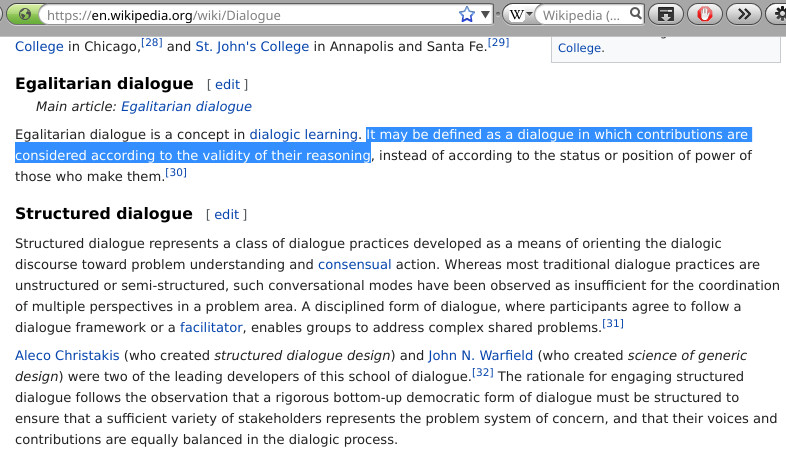

Reference: Egalitarian dialogue
The Central Staff Committee (CSC) of the EPO is trying to make life better for Europeans and for workers of the EPO. It's obviously in the interest of staff that the EPO endures and in order for it to endure citizens of Europe need to consent to it (rebellion comes in many forms, including more 'radical' forms such as 'Brexit'). As António Campinos only joined the Office a couple of years ago (immediately parachuted in as president; at least Benoît Battistelli was associated with the Council before he became the president) we don't suppose he cares about the institution as much as examiners who worked there for 40 years (twenty times as long as he has!) and judging by what has happened since 2018 we can see he's willing to toss it away like a tissue -- much as he did in EUIPO, outsourcing some of its workforce to India (and no, it's likely not legal, but these people are above the law).
"It's obviously in the interest of staff that the EPO endures and in order for it to endure citizens of Europe need to consent to it (rebellion comes in many forms, including more 'radical' forms such as 'Brexit').""In this paper," CSC wrote earlier this year, "we consider that VP1’s apparent good intentions came to nothing - neither in the planning nor in the legal framework of the Office, such as in Circular No. 366. The promise of improvements in respect of the target-setting exercise turned out to be mere lip service - more a manipulation exercise than a genuine interest in taking staff feedback into account."
Here's the full take-down, which gives some praises to Stephen Rowan (Wales/UK):
sc20004cp – 0.2.1/1.3.3
Target setting approach in DG1 for 2020 - Bottom up?
Introduction
On 3 December 2019 VP1 published the DG1 operational plan for 2020 containing the criteria to be applied for setting production targets for next year in DG1.
Mr Rowan calls the so-called “bottom-up planning” an important part of the process, implicitly acknowledging that targets imposed upon staff were sometimes too ambitious in the past.
Staff Representatives in the Working Group on Performance Management (WGPM) repeatedly asked for a proper bottom-up approach to planning.
Bottom up approach
However, observing the results of the current bottom-up approach, as shown in the 2020 operational plan, raises doubts as to its success. When seeing the obscure and arbitrary way in which line managers have implemented the bottom-up process, the scattered results do not come as a surprise. An obscure correction process then apparently happened in the “discussions with the teams” (or rather their managers). The outcome was mixed with a number of other factors (stock levels, timeliness goals, recruitment, resources and SP2023). This resulted (“hey presto!”) in a compliance target of 407k and a target for excellence of 419k, surprisingly close to the target of 2018 (417k). Taking into account the steadily shrinking examiner workforce (not considering a possible further drain due to the 17 measures), it does not look much like the result of any real bottom-up exercise.
VP1’s Communiqué further claims that this target was “suggested by the bottom up plan”. The outcome is however perceived in the Directorates and Teams as more of a “kick in the bottom” than a bottom-up exercise.
Last but not least, some directors are already imposing higher targets than those derived from this pretend bottom-up exercise, citing upper managerial requirements.
Guidelines vs stated intent
Furthermore, one of the last safeguards protecting staff from arbitrarily top-down imposed-upon targets, which is that managers and staff collaboratively agree upon the contribution of individual staff members1, has disappeared in the new version of Circular No. 366 (Guidelines on Performance Management), approved in the GCC on 19 December 2019.
In the meetings of the WGPM that took place last year senior management was essentially deaf to the proposals from Staff Representatives. Mr Rowan, however, appeared to be seriously listening to the CSC’s input, and willing to implement a bottom-up approach while listening to the concerns of staff regarding planning. Nevertheless, and despite our best efforts, one of the last safeguards for staff was removed from Circular No. 366.
Conclusion
VP1’s apparent good intentions came to nothing - neither in the planning nor in the legal framework of the Office, such as in Circular No. 366. The promise of improvements in respect of the target-setting exercise turned out to be mere lip service - more a manipulation exercise than a genuine interest in taking staff feedback into account.
We fear the further devastating effects that this 2020 target, in combination with the New Career System, will have on staff engagement, motivation and health, building on the damage already done since 2015 when the New Career System was implemented.
We also fear the impact that the process will have on the work of the shrinking population of Formalities Officers.
The Central Staff Committee
_______ 1 Circular 366, previously valid version, section I. AIM AND SCOPE: “Performance development is the process by which managers and staff collaboratively agree upon the contribution to be made by individual staff members.”